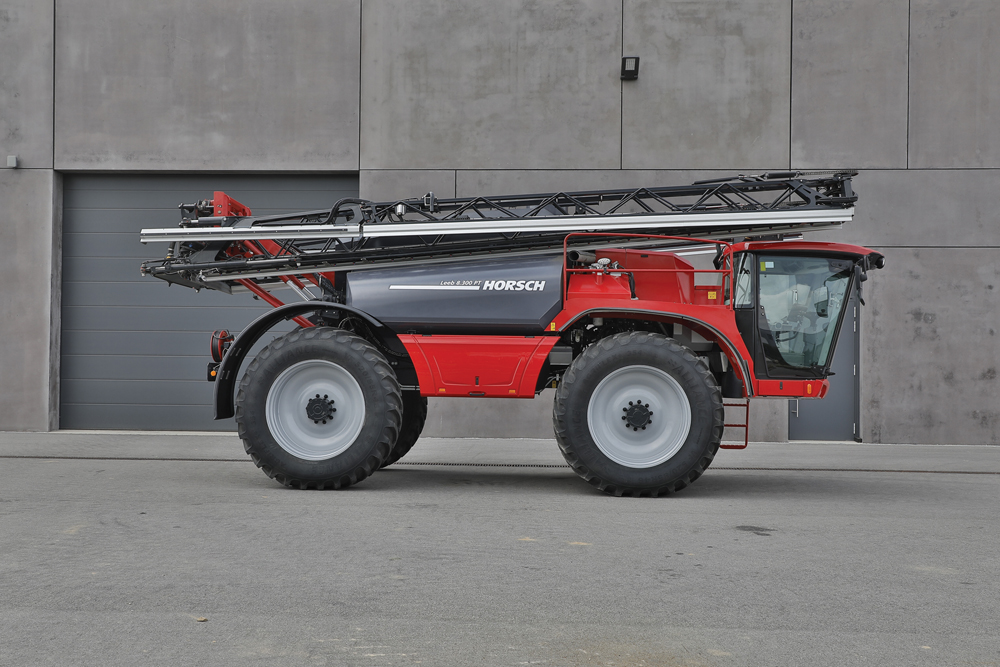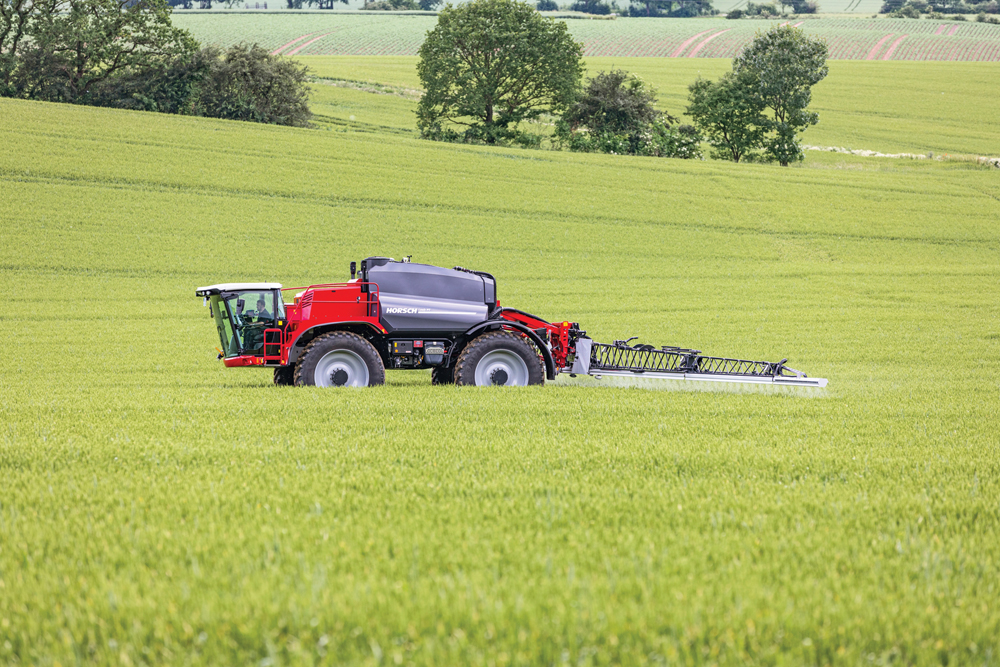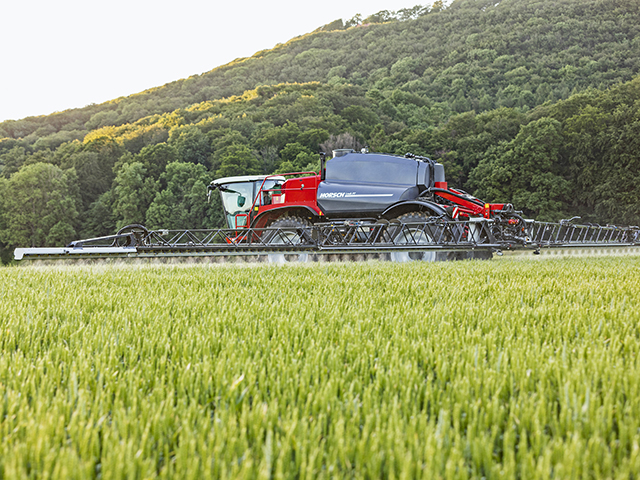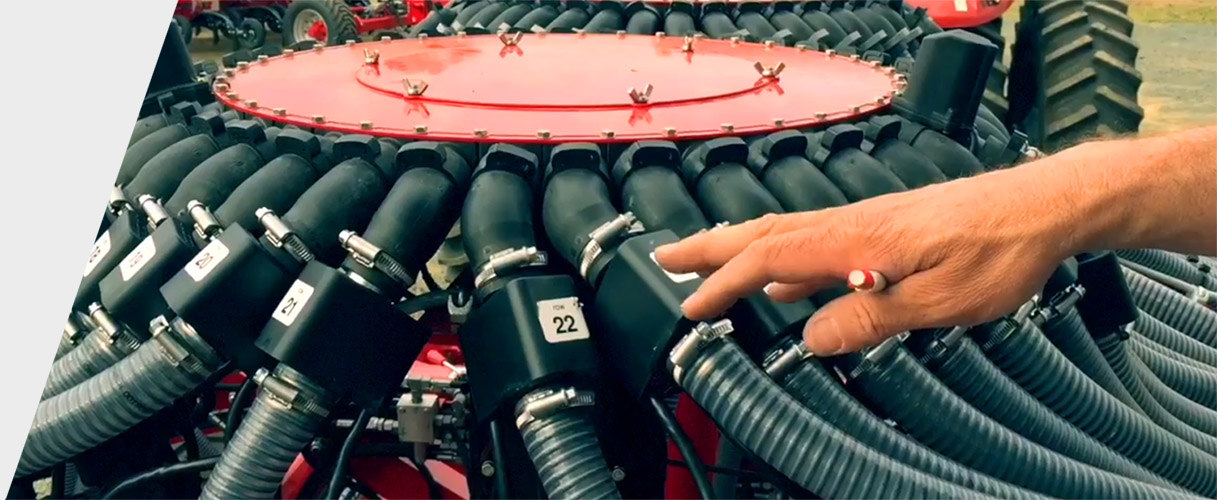
Horsch’s Leeb SP 6300 brings some new features to the Prairie sprayer market
The Horsch Leeb SP 6300 self-propelled sprayer is a whole different platform and concept than we’re used to seeing on the Prairies.
“We went for the root issue of the problem and built a sprayer around that,” said Jeremy Hughes, product manager for Horsch. “The focus of this sprayer is to improve spray quality. What we want is to mitigate drift and maximize coverage. Making sure more live droplets land on their intended targets.”
The new Horsch sprayer accomplishes this by putting the boom closer to the target. Ten to 12 inches away from it, to be more precise. This allows finer spray particles to more evenly and effectively cover pests before the spray either drifts away or simply evaporates into the air.
The Boom Pro Plus controlling system allows five boom sections to move independently from one another. The system can effectively contour over hills while lifting on the side of a valley. This, coupled with a simple yet effective boom suspension system, makes for an extremely smooth operation. This keeps each boom section in close relation with the ground it is spraying, even at normal spraying speeds. An available 20-inch or 10-inch nozzle spacing on the booms maintain proper coverage and spray overlap with the lower boom heights.
Aiding in the operation of the booms is an independent wheel-suspension system keeping the machine stable on even the trickiest terrain. The weight of the machine is divided 50/50 between the front and rear wheels, regardless of product remaining in the tank.

Horsch’s Leeb SP 6300 brings some new features to the Prairie sprayer market
The Horsch Leeb SP 6300 is three to four tons lighter than its North American counterparts. This light weight, along with four-wheel steering, track spacing from 100 to 160 inches and adjustable height to 78 inches, makes the machine a great contender for any field or crop scenario.
A Fiat engine provides the power to a more efficient hydrostatic drive system, which makes more power to the ground without using more horsepower. Hooking that power to the ground, Horsch uses larger 380 or 720/105R54 tires to improve traction and flotation. Most common widths of tires will be available.
Being of European origin, the Horsch Leeb meets a stricter set of environmental regulations than we have in place in North America. In Europe, testing must show only an extremely small percentage of residual chemical present after the sprayer is rinsed and presumed ready for the next crop. In testing, the Hosch Leeb has received the highest rating for this test.
Sprayer cleanliness starts with simplicity. The Horsch Leeb SP 6300 uses less hose and fittings which mean fewer places for chemical to get trapped in the first place. A recirculating boom ensures that chemical is never sitting still inside the wet system, which means it won’t be able to stick to the inside of hoses and fittings.
Finally, the rinsing system is a continuous flush of clean water provided by a pump that is exclusive to the rinsing system. It internally washes the internal components with fresh water, which is then sent through the booms and out the nozzles in one nonstop action. This continuous rinse system is faster and more effective than batch rinsing systems used by most other North American brand sprayers.

Horsch Leeb Sprayer (Progressive Farmer image by Horsch)
The initial sprayer to be offered to the western Canadian market will fit right in with a 120-foot boom and a 1600-gallon liquid capacity. New models and variations released at later date, are expected to get larger over time.
Interestingly, Horsch also plans to have a pull-type sprayer on the market here shortly, as well. The pull-type promises to have the same spraying and rinsing capabilities as its self-propelled sibling, just without the cab and engine.
The new sprayer is set to hit the market in 2021, and although farmers will have to wait until spring of that year before they are able to purchase a new machine, Horsch plans to debut the new machine this summer at Ag in Motion. Demos on the prairies are likely to begin shortly after that. No official price tag has been released, other than that it will be priced competitively within the North American market.
Horsch is committed to having a strong dealer network with a recently built parts distribution center in Saskatoon. As Jeremy said, “Seeding deadlines are tight, combining deadlines are tight. Spraying deadlines are extremely tight. We want to be there to meet those deadlines.”

